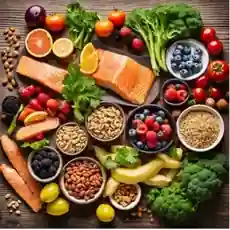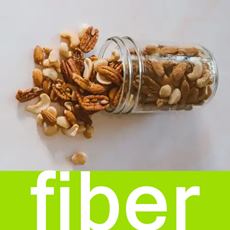Tryptophan
An Essential Amino Acid
Fact Checked
×All the content published in our website is fact checked to validate its accuracy.
Visit our guidelines web page to learn more about our strict processes regarding how we review our content's sources: reliable and reputable journals, media websites, universities, colleges, organizations, and professionals.
Our articles are based on scientific evidence, and the references are included in its footnotes, which are clickable links to sound scientific papers.
First published: 05. Dec.2024
Overview
Tryptophan is an essential amino acid that must form part of your diet as your body cannot produce it. It is vital for life and is involved in the synthesis of molecules that affect mood, sleep, attention, immunity, and the gastrointestinal system. Learn its function, dietary sources, benefits, and risks.
References and Further Reading
(1) A.D.A.M. Medical Encyclopedia [Internet]. Tryptophan. Johns Creek (GA): Ebix, Inc., A.D.A.M.; c1997-2020 [updated 2022 Feb 04; cited 2024 Dec 05]; Available from: https://medlineplus.gov/ency/article/002332.htm
(2) Comai S, Bertazzo A, Brughera M, Crotti S., (2020). Tryptophan in health and disease.Adv Clin Chem. 2020;95:165-218. doi: 10.1016/bs.acc.2019.08.005. Epub 2019 Oct 15. PMID: 32122523
(3) Qin R, Zhao C, Wang C, et al, (2021). Tryptophan potentiates CD8+ T cells against cancer cells by TRIP12 tryptophanylation and surface PD-1 downregulation. Journal for ImmunoTherapy of Cancer 2021;9:e002840. doi: 10.1136/jitc-2021-002840
(4) Lindseth G, Helland B, Caspers J., (2014). The effects of dietary tryptophan on affective disorders. Arch Psychiatr Nurs. 2015 Apr;29(2):102-7. doi: 10.1016/j.apnu.2014.11.008. Epub 2014 Dec 9. PMID: 25858202
(5) Bravo R, Matito S, Cubero J, Paredes SD, Franco L, Rivero M, Rodriguez AB, Barriga C., (2013). Tryptophan-enriched cereal intake improves nocturnal sleep, melatonin, serotonin, and total antioxidant capacity levels and mood in elderly humans. Age (Dordr). 2013 Aug;35(4):1277-85. doi: 10.1007/s11357-012-9419-5. Epub 2012 May 24. PMID: 22622709
(6) Richard DM, Dawes MA, Mathias CW, Acheson A, Hill-Kapturczak N, Dougherty DM., (2009). L-Tryptophan: Basic Metabolic Functions, Behavioral Research and Therapeutic Indications. Int J Tryptophan Res. 2009 Mar 23;2:45-60. doi: 10.4137/ijtr.s2129. PMID: 20651948
About this Article
Tryptophan, A. Whittall
©2024 Fit-and-Well.com. First Published: 05.Dec.2024. Update scheduled for 05.Dec.2027. https://www.fit-and-well.com/fitness/tryptophan.html
Tags: serotonin, tryptophan, melatonin, cancer, vitamin B3



